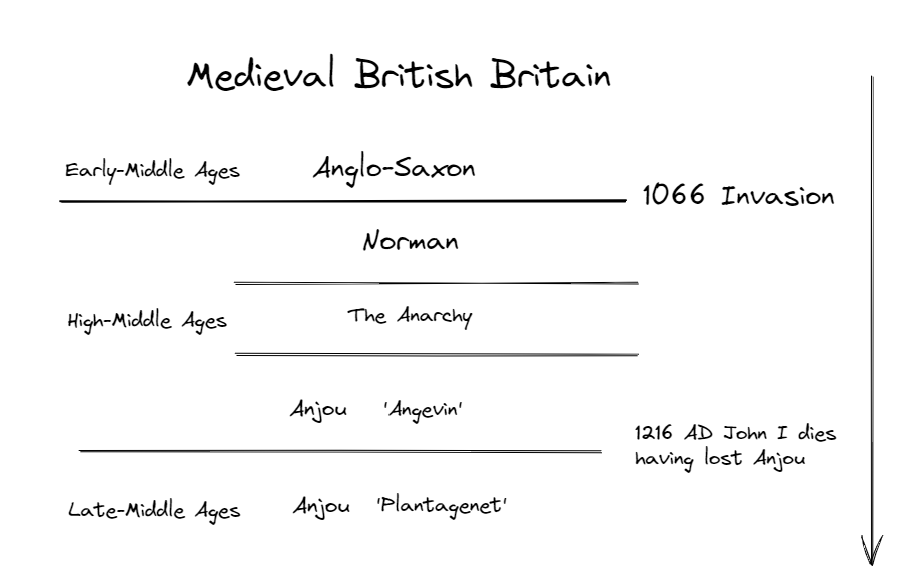French ruled britain
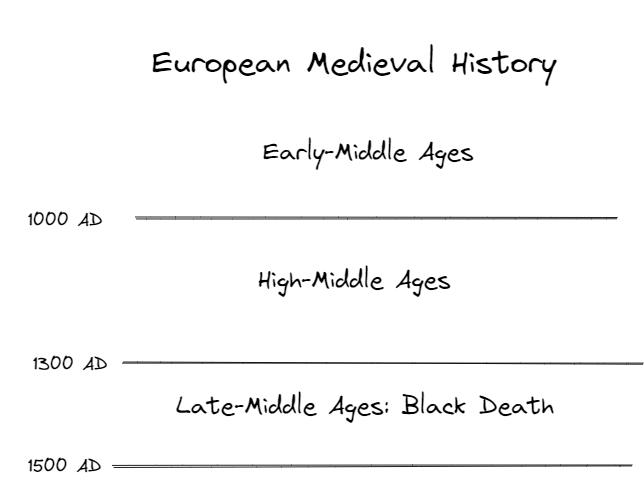
The Normans invaded Britain in 1066 ending the Anglo-Saxon rule. Following the Norman invasion in 1066, the ruling class remained French speaking for roughly 350 years. The first native English-speaking king, Henry IV wasn’t coronated until 1399. The language of government remained French until this time, when it was replaced by English as the language of parliament and written records in what was called the ‘chancery standard’ of English.
Every legal trial was conducted in ‘Law French’, until the ‘Pleading in English’ act of 1362. The vast majority of the population only spoke middle English, so for the first 200 years after the Norman invasion, most people were tried in a foreign tongue and understood very little of the trial. Even after the pleading act, law French remained the language of legal education and many written proceedings until the rule of Oliver Cromwell in the 1650s, with its emphasis on removing the relics of archaic ritual from legal and governmental processes. But by that point, it has ceased to be a language to facilitate communication. It wasn’t officially banned from courts until 1730 in the Proceedings in Courts of Justice Act.
The motto of the British monarchy and the Chivalric orders remain French. Dieu et mon droit was first used as a battle cry by Richard I in 1198 at the Battle of Gisors, when he defeated the forces of Philip II of France. And Honi soit qui mal y pense is the motto of the British chivalric Order of the Garter since its foundation in 1348. Both still appear on the Royal coat of arms of the United Kingdom and thus on every British Passport.

Edward III claimed the French throne in the mid-1300’s through his mother’s inheritance, a claim which the English crown maintained until the Napoleonic wars in the early 1800s; when reinstalling French royalty didn’t seem like such a bad idea.
These French-speaking rulers of England rulers also retained much of their French territory until 1450. William the Conqueror and his sons were from- and thus the direct-rulers-of- Normandy and largely lived-in Normandy, ruling from Caen and Rouen which they considered their hometowns. 100 years after the invasion, a civil war broke out between two of William the Conqueror’s grandchildren. There were no males heirs of King Henry I, son of William the conqueror. Henry’s daughter, Matilda, was contested by a rival, her cousin, Stephen, son of Henry’s sister. Both claimants were from non-Norman houses. This is because women marry out of their parent’s house into other houses. Matilda was supported through her half-brother, a bastard son of William I, Robert of Gloucester (who was also French).
The dynasty could only be inherited through men. So, when a married woman became queen, the dynasty always changed… until Elizabeth II married Philip in 1947.
Henry’s died while hunting in Normandy. At this moment, these two rival cousins were in physically adjacent counties: Anjou and Blois. Matilda, at 25 was forced into the House of Anjou, by her father to protect the southern border of Normandy, but the husband, Geoffrey was 13 years old, and Matilda was a widow of the Holy Roman Emperor. She lived there after the marriage.
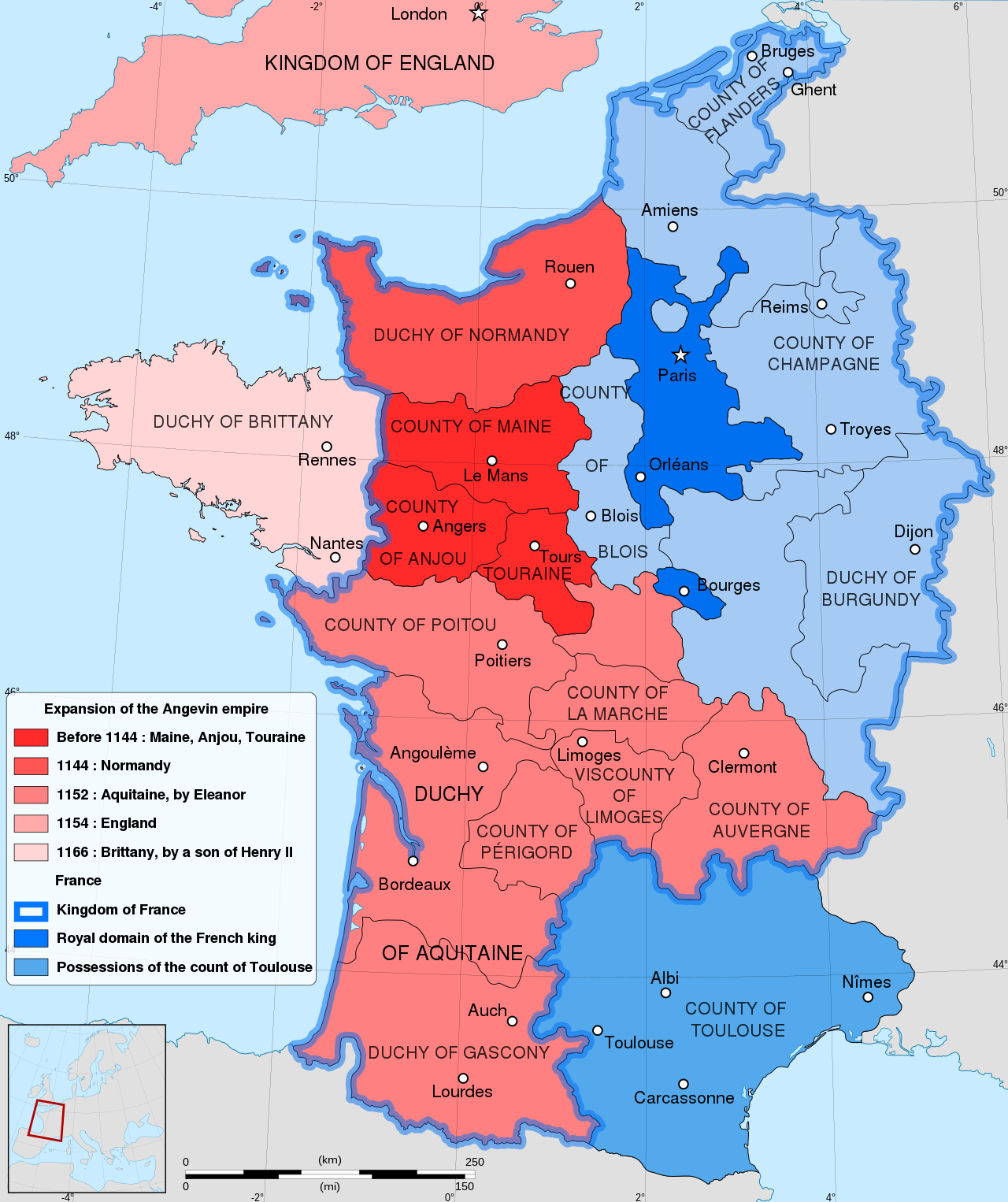
While Matilda stayed in Anjou, Stephen sped from back from Blois after Henry’s death and took the throne, but years later, the bastard Robert, led a rebellion in support of Matilda, during which the now 23-year-old Geoffrey invaded Normandy from Anjou. Apparently, he used to wear a flower of broom which in old French is called “plante genete” (from Latin planta genista) in his cap or his giving him the nickname Plantagenet. This becomes significant.
Matilda’s son eventually successfully invaded England permanently. And thus began the ‘Angevin Dynasty’. This whole period was called the anarchy.
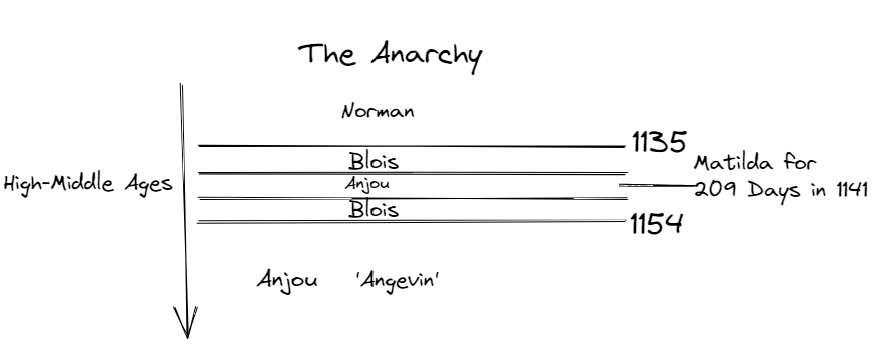
These Angevin kings did not regard England as their primary home until most of their continental domains were lost by King John in 1204 (50 years in to the new dynasty) and shortly after the start of his rule. John spent the rest of his life dedicated to trying to get it back and recover from the shame. But English kings continued to call themselves the rightful Dukes of Normandy for another 250 years after the loss. They did not claim the Countship of Anjou, even though they remained head of the house because they had to be realistic about their expectations. Nevertheless, the English were able to hold onto Gascony, including Bordeaux
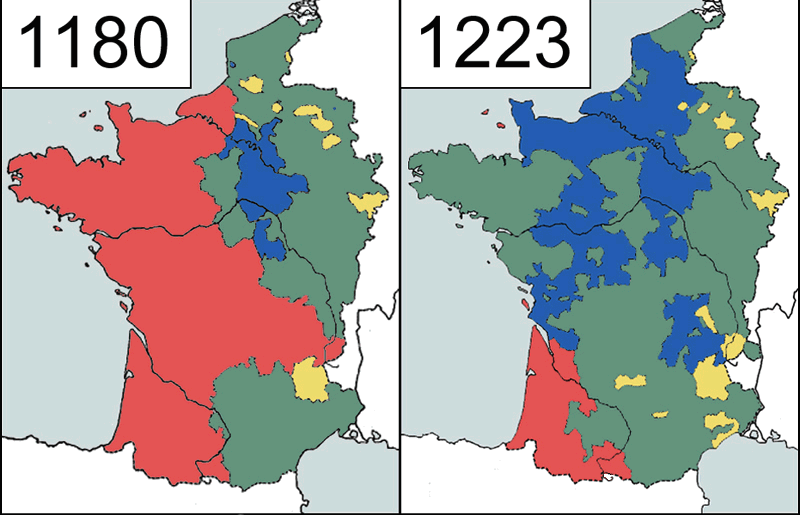
King John at one point lost control of the majority of barons of England and King Louis of France travelled over to London where he lived for over a year and proclaimed King, at a grand ceremony in St. Paul’s Cathedral, on 2 June 1216, in the presence of numerous English clergy and nobles, the Mayor of London and Alexander II of Scotland. After Louis was defeated in England at the Battle of Lincoln on 20 May 1217. John’s 9-year-old son Henry III became King of England.
The death of King John is often considered the end of the high Middle Ages in Britain. His successor Henry III, continued to officially lead the House of Anjou, and naturally it remained the Anjou dynasty, but historians generally instead call all the Anjou Kings starting with Matilda the ‘Plantagenet’ The reason is to distinguish them from the other branches of the house: Capetian House of Anjou and the House of Lorraine-Anjou which later branched. Sometimes, historians also use the word ‘Plantagenet Kings’ in contrast to ‘Angevin Kings’. If this particular distinction is being drawn; ‘Angevin’ means the first three Anjou kings including King John and ‘Plantagenet’ means all the kings after King John until the end of the dynasty in 1485.
At the time ‘Plantagenet’ just remained the historic nickname of Geoffrey. The first person to claim to be in the House of Plantagenet, or to use the surname, (surname and house was synonymous in the past) was during the War of the Roses, when, starting in 1455, the father of the future king Richard III, who himself was claimant to the throne, to underline his patrilineal inheritance from the original Geoffrey ‘Plantagenet’ and give weight to his Cadet within the House of Anjou — the House of Lancaster. When his son Richard III took the throne, he created the idea of the House of Plantagenet, and retro-fitted it to all the Kings back to Geoffrey, because when you are a monarch you can make up whatever rule about ethereal house naming you want.
When the Tudors won the throne only 30 years after the start of Richard III’s father’s ‘Plantagenet’ re-branding campaign, they continued to use ‘Plantagenet’ to refer to the previous dynasty and the name was cemented.
